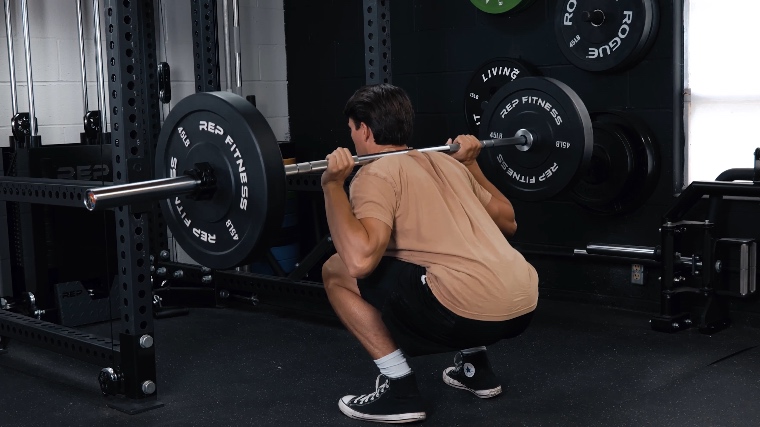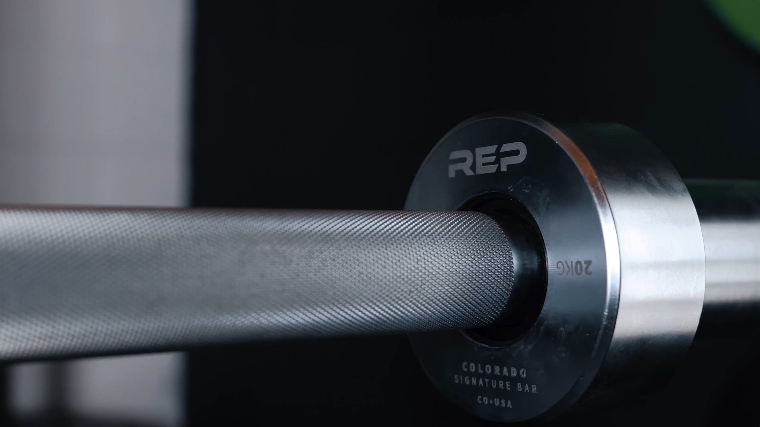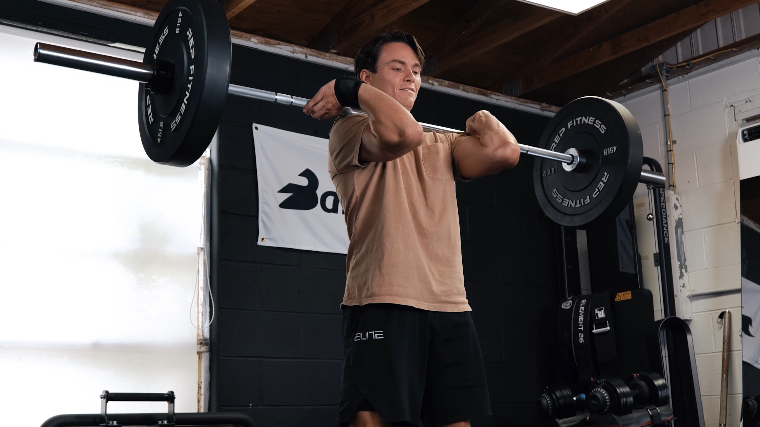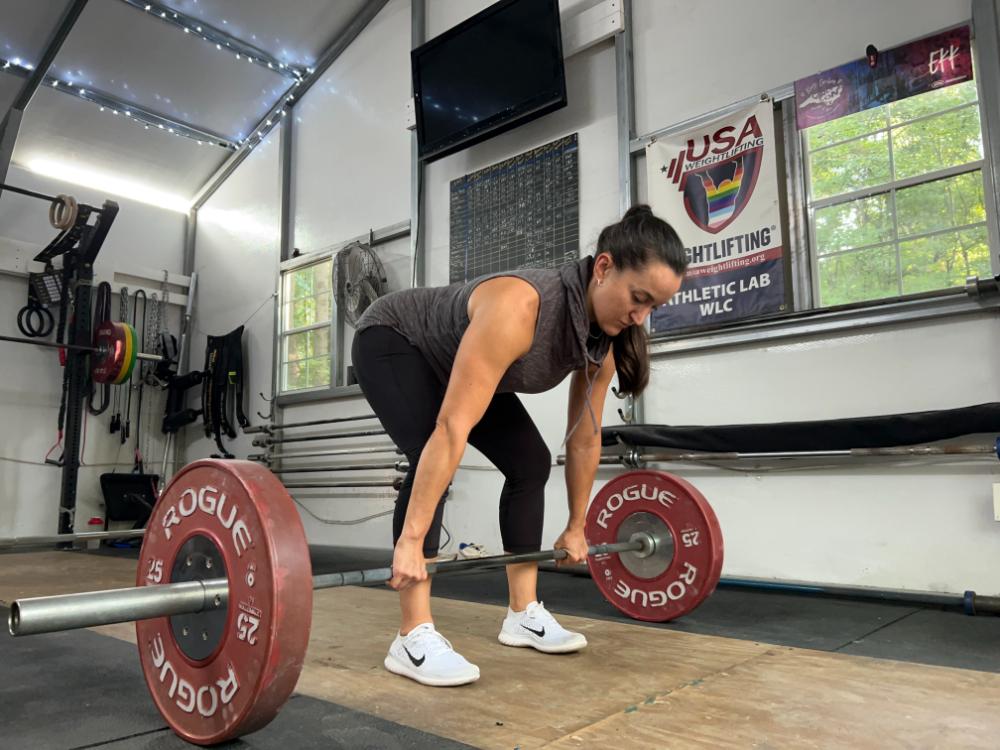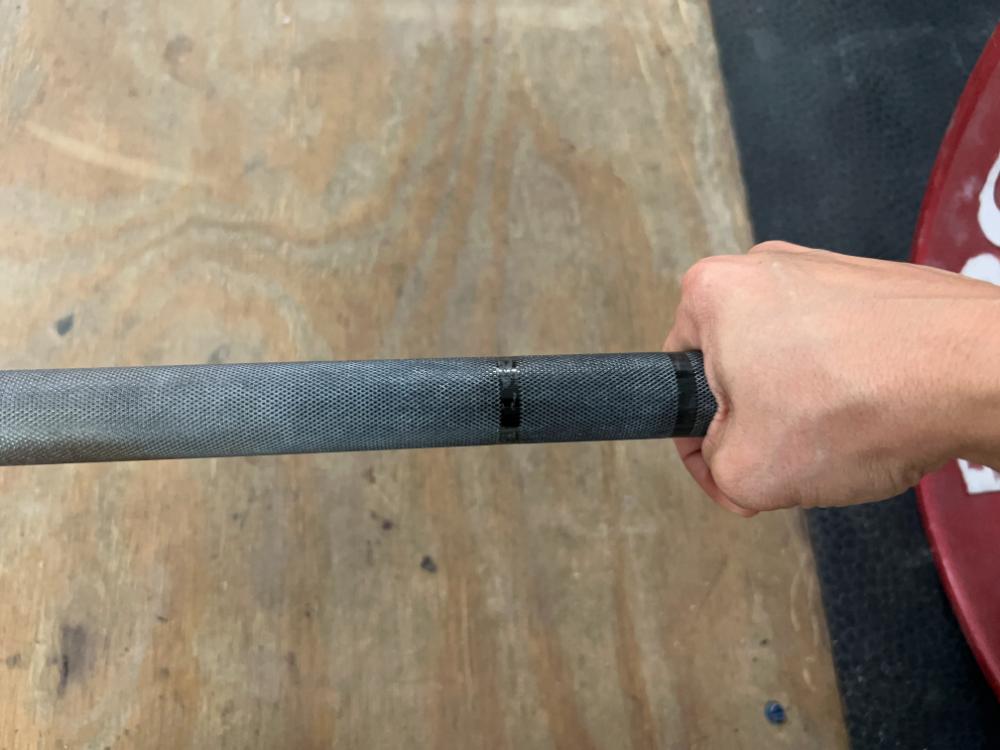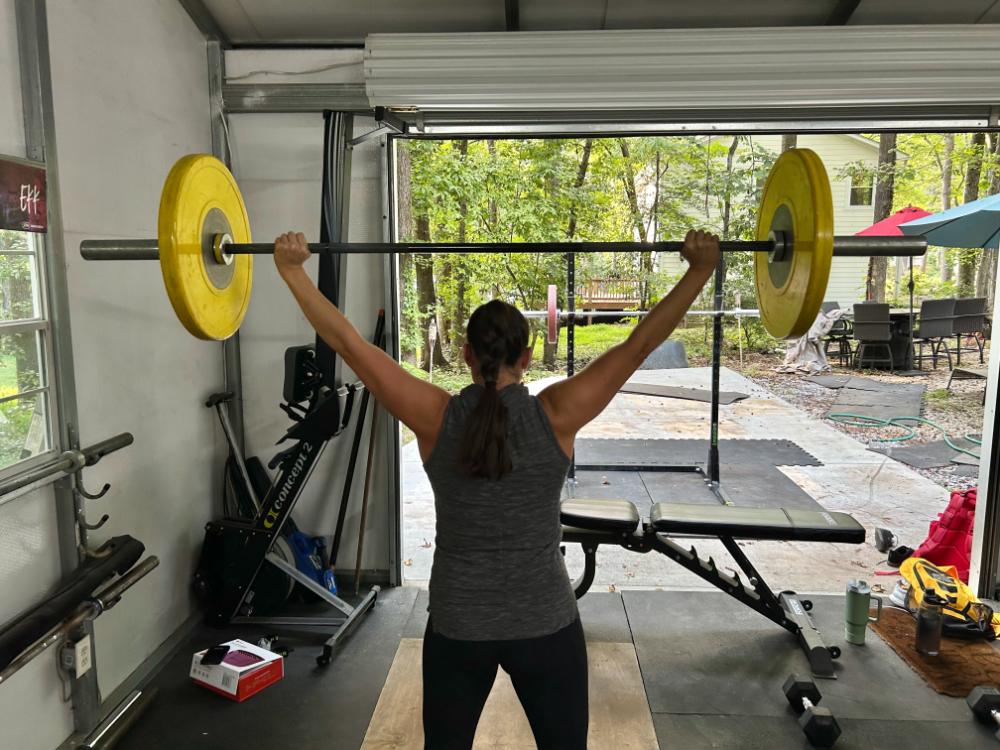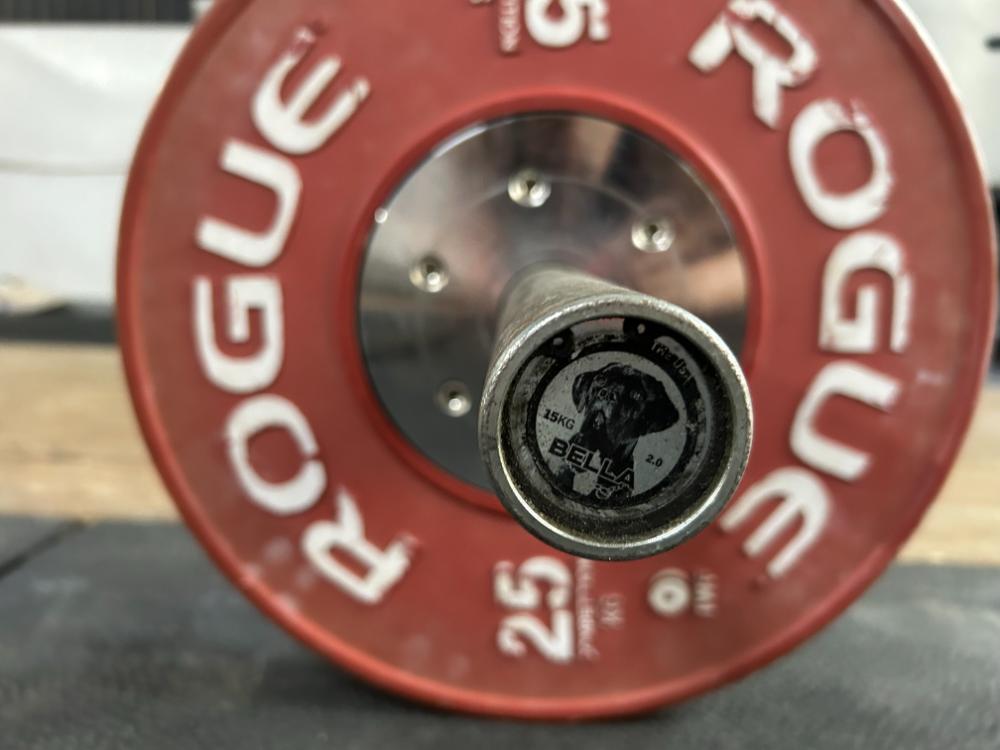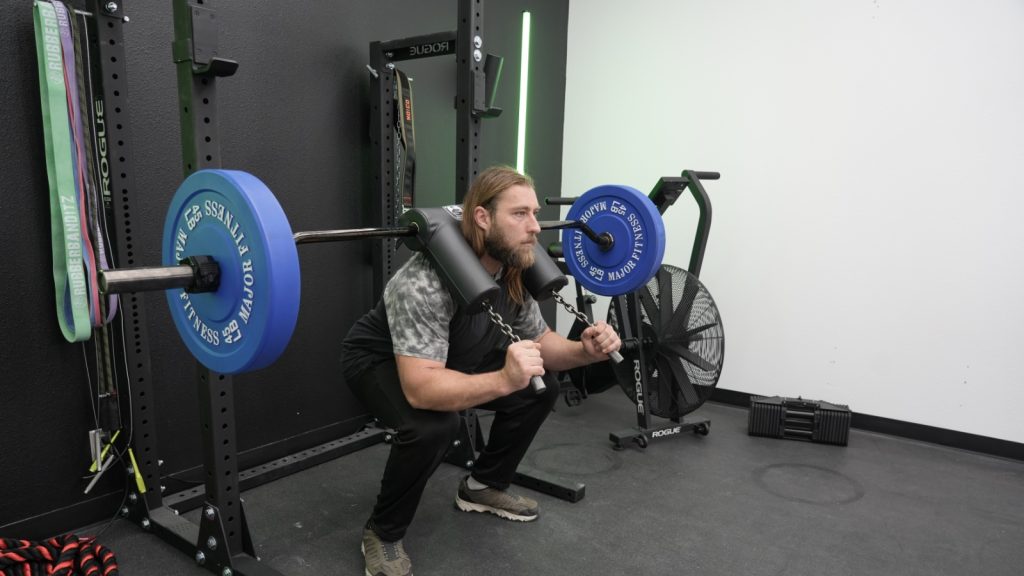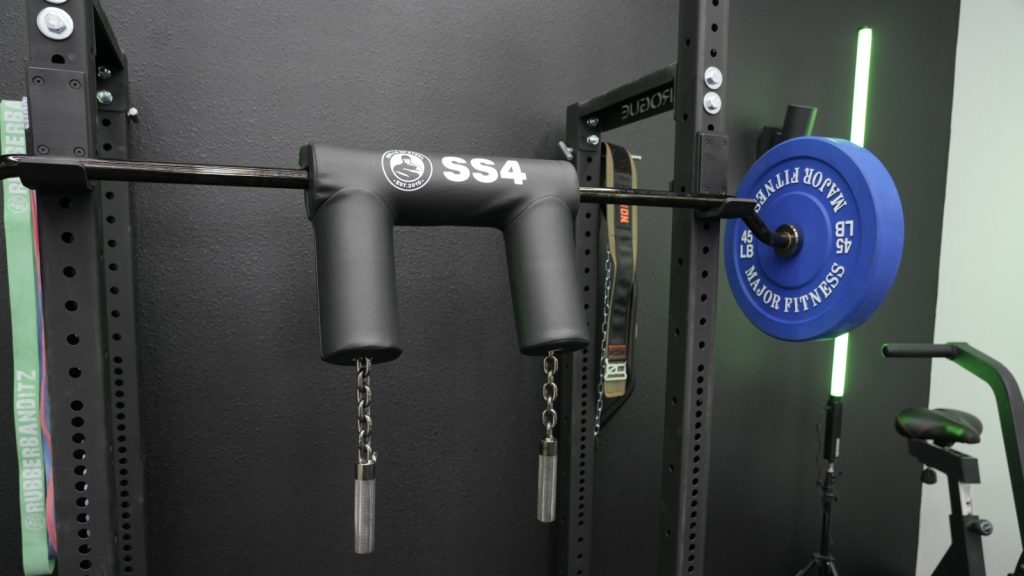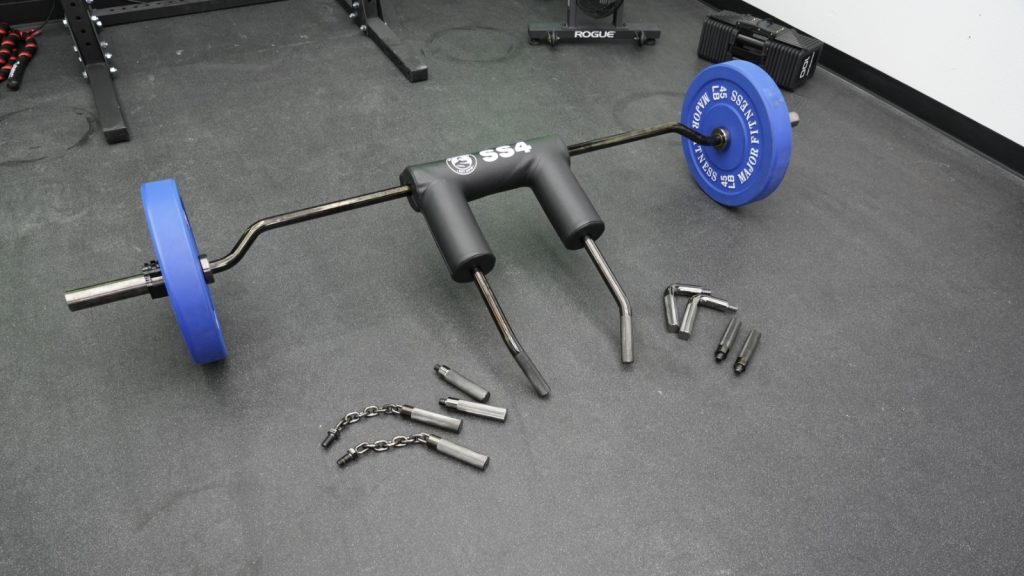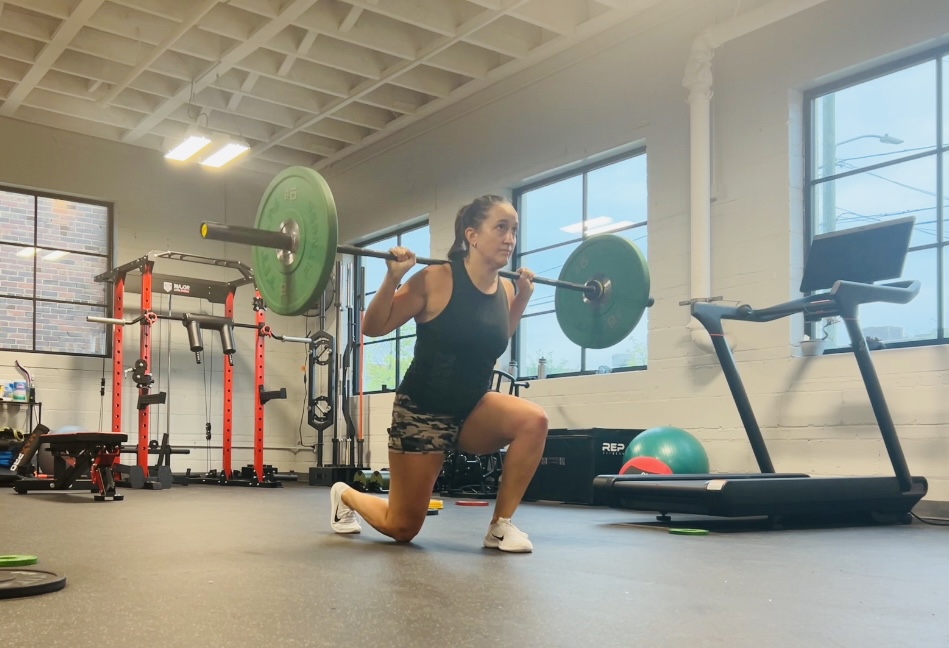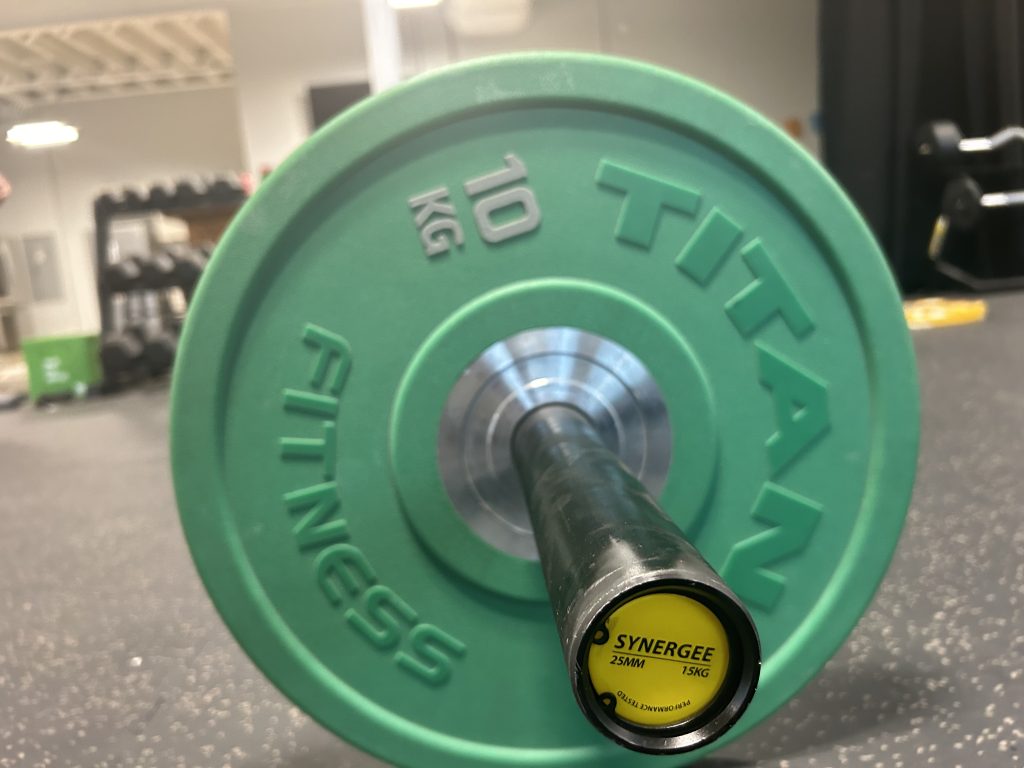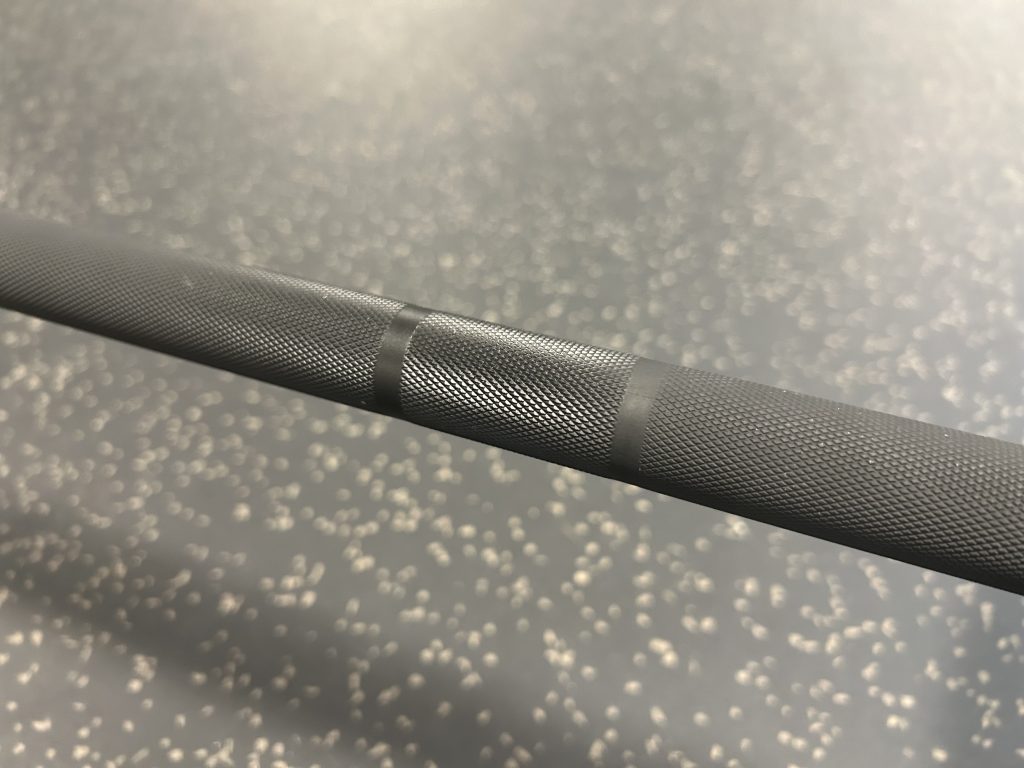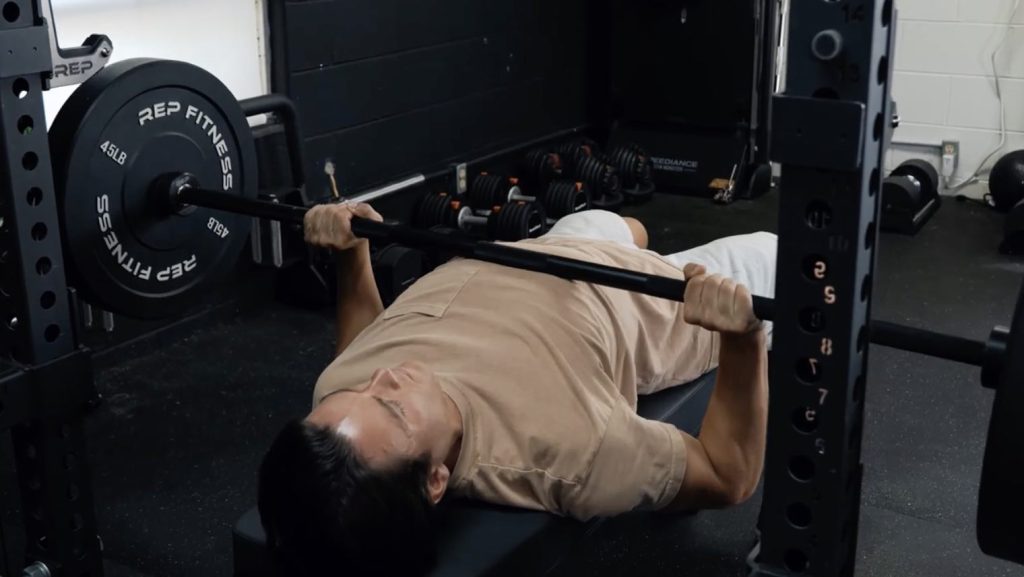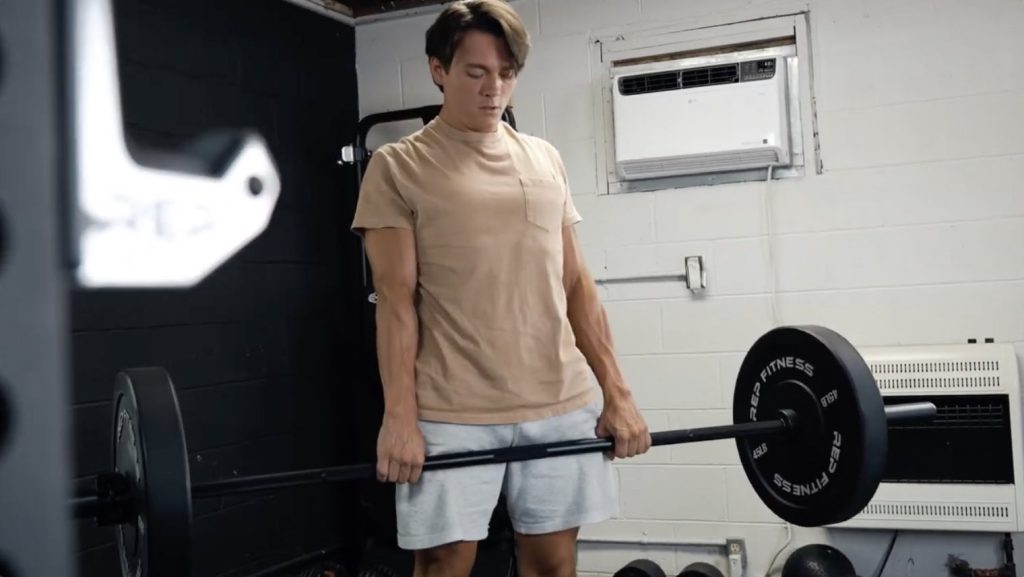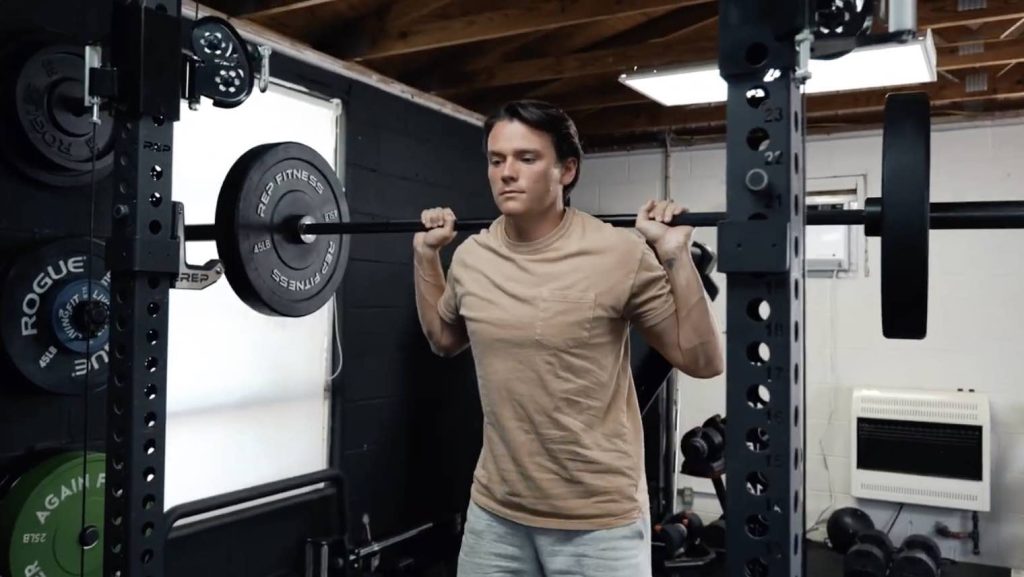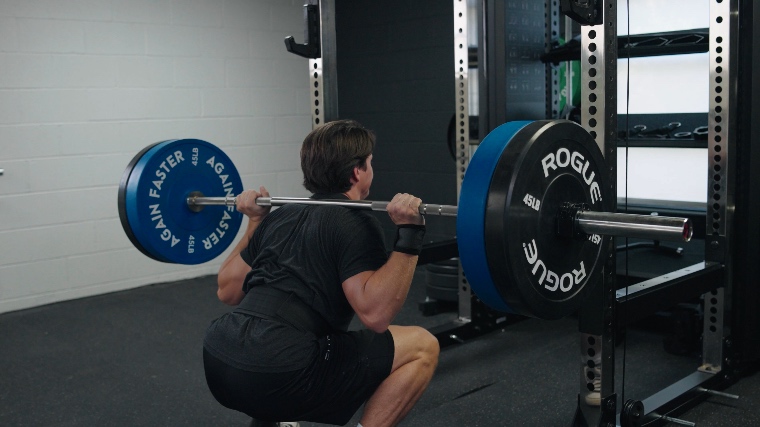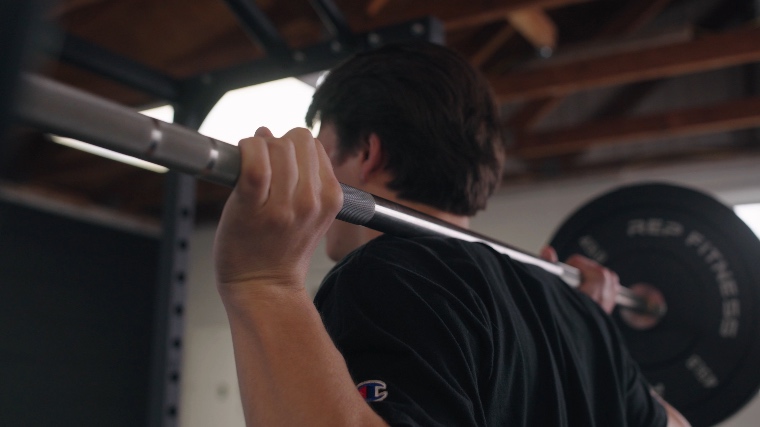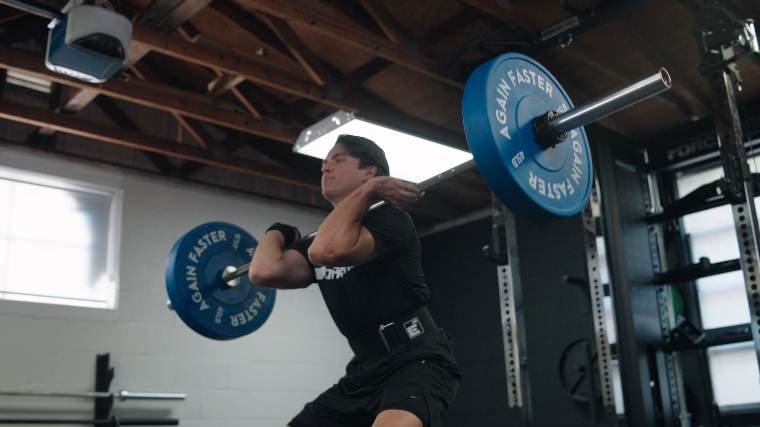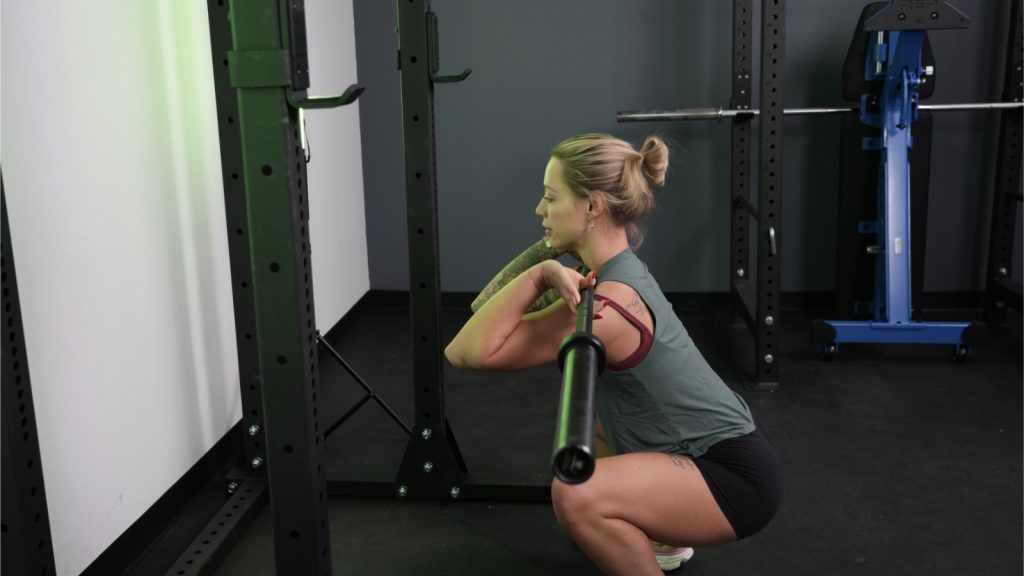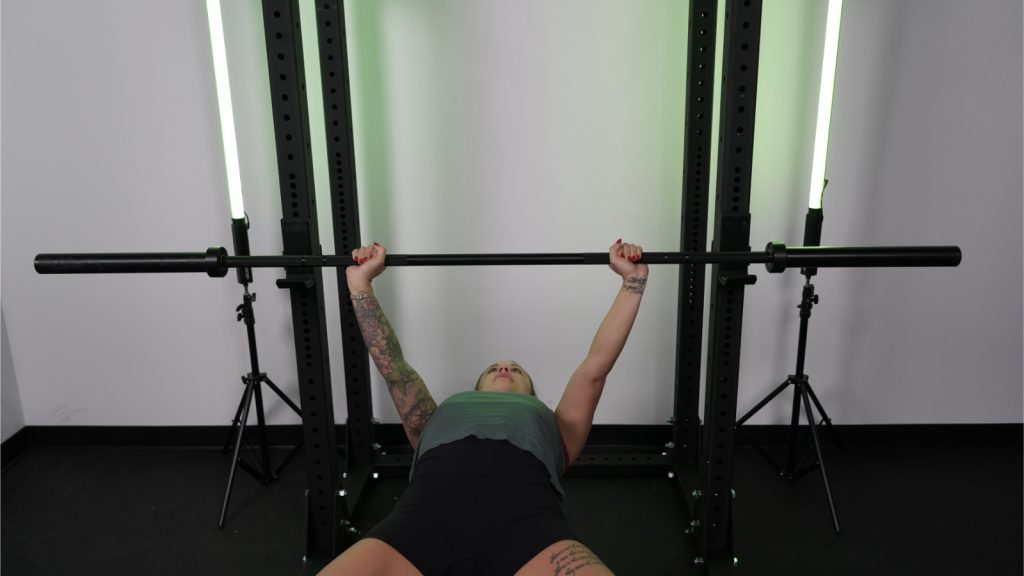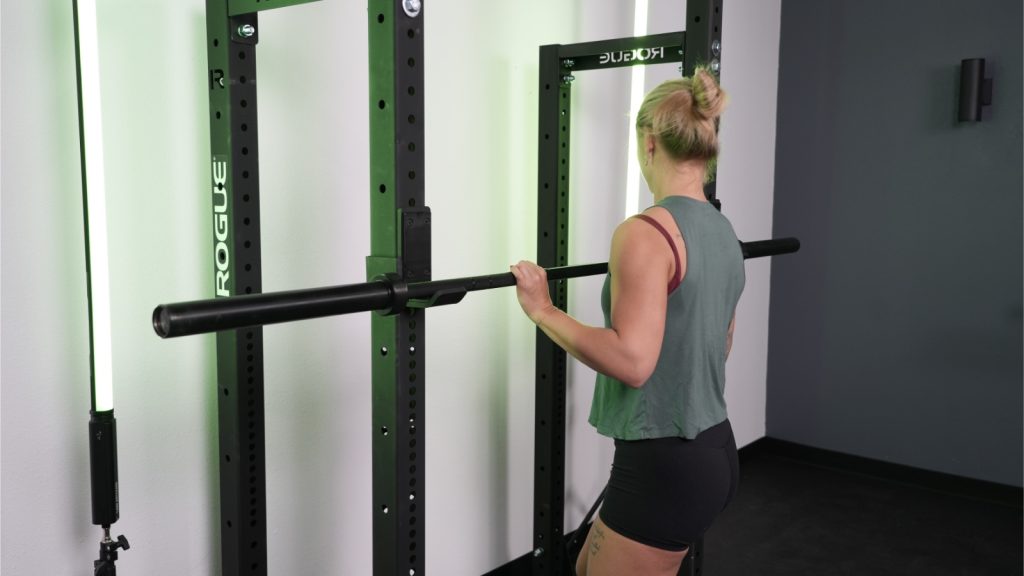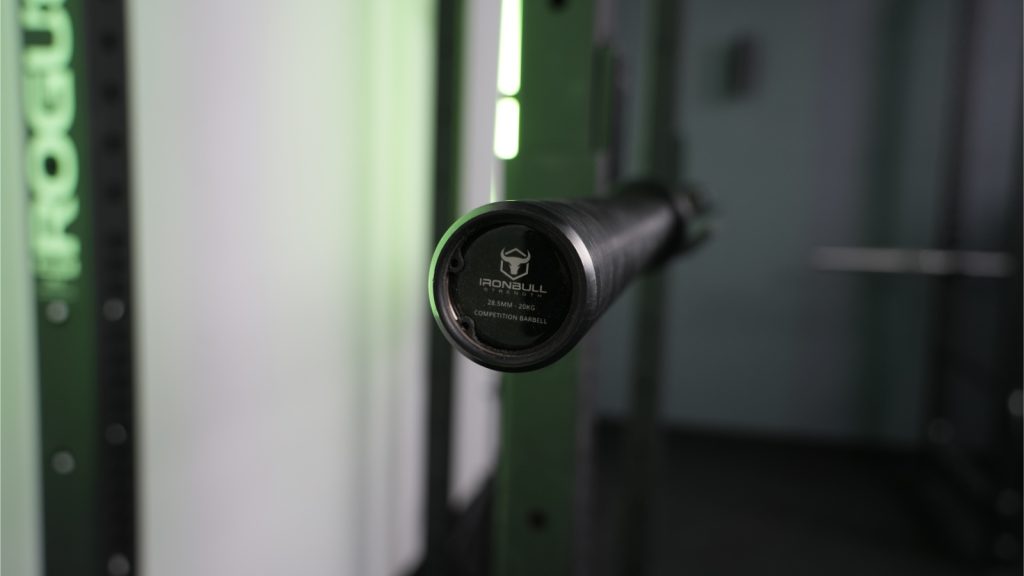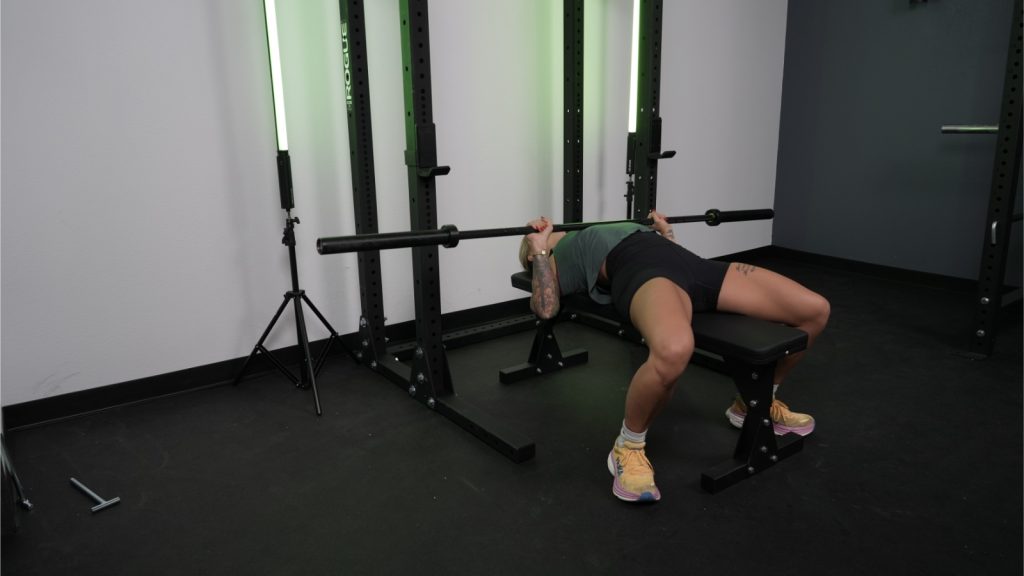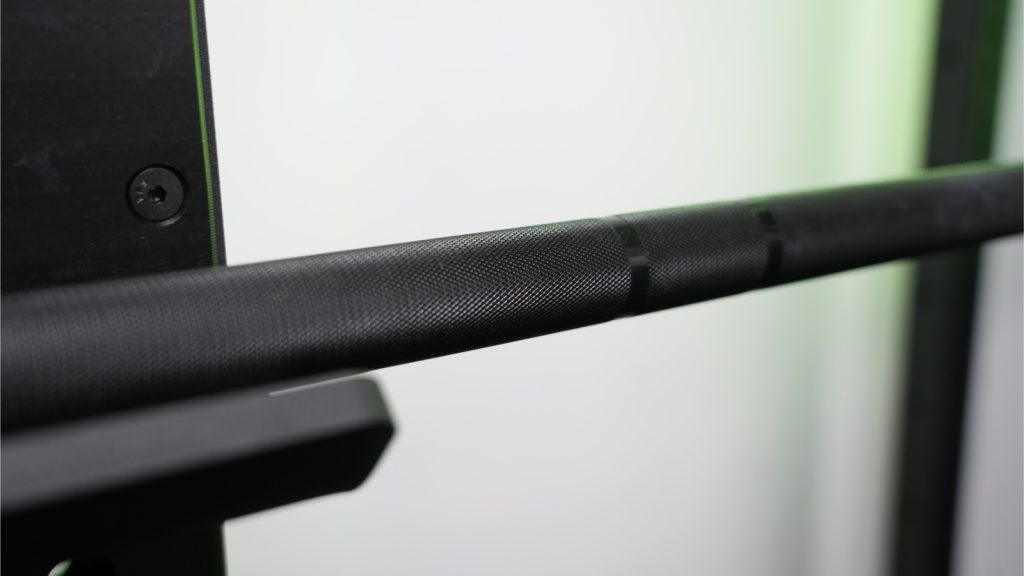When it comes to the best home gym equipment — or strength-training gear in general — the barbell reigns supreme. “For exercise to be considered strength or resistance training, it must challenge your muscles to the point where they adapt and become stronger,” says Christopher Mohr, PHD, RD. “One way to do this is by lifting weights with barbells.” The versatility, style, and performance baked into these metal rods is iconic in the fitness space, and virtually any athlete can benefit from adding barbell-centric movements to their regimen. The best barbells combine craftsmanship with efficiency to help you get the most out of training each and every day.
If you’re interested in a barbell for your garage gym, you have more options than ever … which is both good and bad. That’s where we come in. Over the years, the BarBend editorial team has helped over 850,000 athletes find the right strength equipment for their home gyms. We worked with our in-house experts (which include former Olympians) and our testing squad to test over 20 barbells, using our fitness equipment testing methodology to analyze and rate them on the following factors:
- Knurling: Was the knurling mild or aggressive? Did testers lose their grip easily, or did the knurling tear up their nails?
- Durability and Tensile Strength: Was the barbell built to hold multiple weight plates? Was the tensile strength at least 190,000 PSI?
- Performance: Did the barbell perform well for its intended purpose? Did it significantly enhance or detract from the workout experience?
After weeks of testing, debating, and lifting as much weight as possible, these are the best barbells of 2025.
The 11 Best Barbells of 2025
- Best Overall Olympic Barbell: REP Fitness Colorado Bar
- Best Barbell for Women: Rogue Fitness Bella Bar 2.0
- Best Budget Barbell: Giant Fitness Basic Bar
- Best Barbell for CrossFit: Fringe Sport Wonder Bar V2
- Best Safety Squat Bar: Bells of Steel SS4
- Best Barbell for Beginners: Synergee Games Cerakote Barbell
- Best Trap Bar: Titan Fitness Open Trap Bar
- Best Barbell for Powerlifting: REP Fitness Double Black Diamond Power Bar
- Best Barbell for Weightlifting: Rogue Fitness Ohio Bar
- Best Multipurpose Barbell: Iron Bull Competition Bar
- Best Barbell on Amazon: CAP Barbell Beast Barbell
Best Barbells Video Review
While you should still read this article, check out our video review of the best barbells on the market in 2025. Jake Herod, NASM-CNC, takes you through some of our picks and explains why each one deserves its award.
Best Overall Olympic Barbell: REP Fitness Colorado Bar
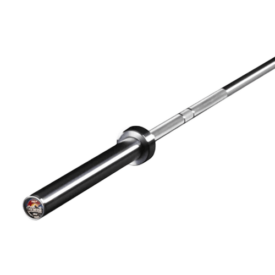
The REP Fitness Colorado Bar is designed for all-around use, thanks to its high weight rating and multiple coating and knurling options. For Olympic weightlifters, the composite bushings provide a smooth collar spin with just a touch of friction.
Specs
- Price: Starting at $319.99
- Weight: 20kg
- Tensile Strength: 190,000 PSI
- Weight Rating: 1,500lbs
- Diameter: 28.5mm
- Coatings: Hard Chrome, Black Cerakote, Blue Cerakote, Green Cerakote, Red Cerakote, White Cerakote
- Knurling Marks: IWF, IPF
- Warranty: Lifetime
- Bushings/Bearings: Composite bushings
Read our full REP Fitness Colorado Bar Review.
Best Barbell for Women: Rogue Fitness Bella Bar 2.0

The Bella Bar 2.0 is perfect for women seeking a versatile and durable barbell for their workouts.With a slightly smaller diameter and an E-Coat finish, people with smaller hands should find this bar easier to grip.
Specs
- Price: Starting at $235
- Weight: 15kg
- Tensile Strength: 190,000 PSI
- Weight Rating: N/A
- Diameter: 25mm
- Coatings: Black E-Coat, Stainless Steel, Black Cerakote, Blue Cerakote, Red Cerakote, Green Cerakote, Navy Cerakote, Orange Cerakote, Light Blue Cerakote, Pink Cerakote, Purple Cerakote, Gold Cerakote, Light Grey Cerakote, Black Zinc
- Knurling Marks: IWF, IPF
- Warranty: Lifetime construction warranty
- Bushings/Bearings: Bushing
Best Budget Barbell: Giant Fitness Basic Beatdown Bar
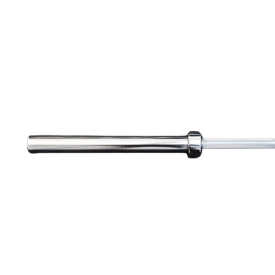
This beginner-friendly barbell from GIANT is 28mm and weighs 20kg — 44 pounds. Its light diamond knurling pattern provides a reasonable grip for accessory movements and the bar has a static capacity of 700 pounds.
Specs
- Price: $159.99
- Weight: 20kg
- Tensile Strength: 100,000 PSI
- Weight Rating: 700lbs
- Diameter: 29mm
- Coatings: Spring steel, Chrome
- Knurling Marks: N/A
- Warranty: Lifetime
- Bushings/Bearings: Bushings
Best Barbell for CrossFit: Fringe Sport Wonder Bar V2
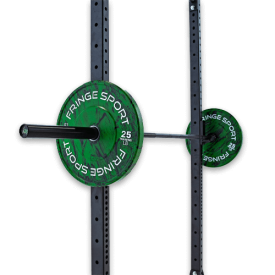
The Wonder Bar V2 is a unique offering in the barbell category as you can actually choose between rotation systems. While other barbells typically offer one system or the other, you can truly fine-tune your setup with the Wonder Bar V2’s bushing barbell for slower, powerlifting-centric movements or the bearing-equipped barbell for more dynamic exercises like you’d experience in CrossFit or Olympic weightlifting.
Specs
- Price: Starting at $269
- Weight: 20kg
- Tensile Strength: 205,000 PSI
- Weight Rating: 1,600lbs
- Diameter: 28mm
- Coatings: Killer All-Black Zinc
- Knurling Marks: IWF, IPF
- Warranty: Lifetime
- Bushings/Bearings: Available in both
Best Safety Squat Bar: Bells of Steel SS4
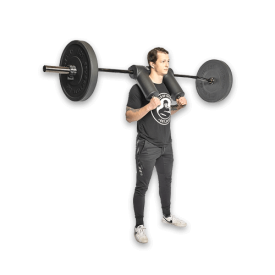
This safety squat bar from Bells of Steel can be a treat to train with thanks to its impressive balance and accommodating shoulder pads. Plus, the handles are interchangeable with four different setups to choose from for refreshed, engaging workouts each time leg day rolls around.
Specs
- Price: $319.99
- Weight: 20.68kg
- Tensile Strength: N/A
- Weight Rating: 1,500lbs
- Diameter: 32mm
- Coatings: Black Titanized
- Knurling Marks: N/A
- Warranty: Limited lifetime
- Bushings/Bearings: N/A
Best Barbell for Beginners: Synergee Games Cerakote Barbell
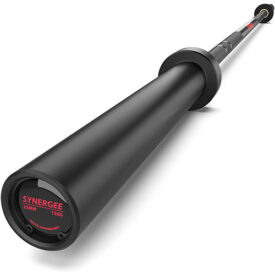
The Synergee Games Cerakote barbell has a medium knurling, whip and has an above average tensile strength. Combine that with 10 needle bearings, and we think this barbell has a lot to offer many types of athletes.
Specs
- Price: $239.95
- Weight: 20kg
- Tensile Strength: 190,000 PSI
- Weight Rating: 1,500lbs
- Diameter: 28mm
- Coatings: Red Ceramic, Black Ceramic
- Knurling Marks: IWF, IPF
- Warranty: Lifetime warranty
- Bushings/Bearings: Bearings
Best Trap Bar: Titan Fitness Open Trap Bar
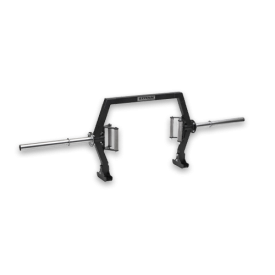
This Open Trap Bar from Titan Fitness packs in plenty of sturdiness and durability across its boxed tube design, and the integrated deadlift jack makes loading up for a heavy set more convenient than ever. Plus, this 88.5-inch length can be racked in your typical squat rack, which can be a great setup for heavy rack pulls or other rows.
Specs
- Price: $349.99
- Weight: 65lbs
- Tensile Strength: N/A
- Weight Rating: 1,500lbs
- Diameter: 32mm, 38mm
- Coatings: Black Powder Coat
- Knurling Marks: N/A
- Warranty: One-year warranty
- Bushings/Bearings: N/A
Best Barbell for Powerlifting: REP Fitness Double Black Diamond Power Bar
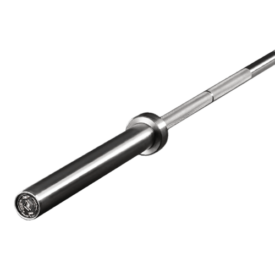
Built for heavy squats, bench presses, and deadlifts, this bar is super stiff for stability with an extra millimeter of thickness to prevent any wobble during high-percentage lifts. Plus, aggressive center knurling prevents the bar from slipping down during low-bar squats.
Specs
- Price: Starting at $329.99
- Weight: 20kg
- Tensile Strength: 200,000 PSI
- Weight Rating: 1,500lbs
- Diameter: 29mm
- Coatings: Black Cerakote, Blue Cerakote, Green Cerakote, Red Cerakote, Stainless Steel
- Knurling Marks: IPF
- Warranty: Lifetime
- Bushings/Bearings: Bushings
Read our full REP Fitness Double Black Diamond Power Bar Review.
Best Multi-Purpose Barbell: Rogue Fitness Ohio Bar

The Rogue Ohio Bar is 28mm in diameter, has a sleeve length of 16.4 inches, and features two knurling marks for optimal hand placement. It's made of stainless steel, and comes with a lifetime warranty.
Specs
- Price: Starting at $275
- Weight: 20kg
- Tensile Strength: 190,000-200,000 PSI
- Weight Rating: N/A
- Diameter: 28.5mm
- Coatings: Black Oxide, Black Zinc, Stainless Steel, Cerakote, E-Bar
- Knurling Marks: IWF, IPF
- Warranty: Lifetime
- Bushings/Bearings: Bushings
Read our full Rogue Ohio Bar Barbell Review.
Best Multipurpose Barbell: Iron Bull Competition Bar
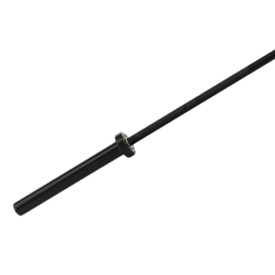
This barbell can withstand endless reps, thanks to its durable steel build. Plus, for those shopping on a budget, this is one of the cheapest options on the market.
Specs
- Price: $225
- Weight: 20kg
- Tensile Strength: 200,000 PSI
- Weight Rating: N/A
- Diameter: 28.5mm
- Coatings: Black Zinc
- Knurling Marks: IWF, IPF
- Warranty: Limited lifetime
- Bushings/Bearings: Bearings
Best Barbell on Amazon: CAP Barbell Beast Barbell

This is a great barbell for those who like a little customization — you can opt for a bar with or without a center knurl. Plus, it comes at a great price point.
Specs
- Price: $133.49
- Weight: 20kg
- Tensile Strength: 110,000 PSI
- Weight Rating: N/A
- Diameter: 30mm
- Coatings: Black Chrome, Silver Zinc
- Knurling Marks: Varies, depending on bar
- Warranty: N/A
- Bushings/Bearings: Bushings
How We Tested and Chose the Best Barbells
The BarBend team is made up of competitive athletes, certified personal trainers, and lifelong fitness enthusiasts. To determine the best barbells available today, we got hands-on with 55 different profiles from the industry’s best brands, using a multi-point methodology to rate each profile on a scale of 1 (lowest) to 5 (highest) to determine our top picks. Below are some of the categories and components we looked at to come up with our findings.
- Workout Performance: We understand that not every bar is designed for multiple uses, so for more specific silhouettes catering to powerlifting or Olympic weightlifting needs, we made sure to examine their efficiency in their intended strength sport.
- Durability, Tensile Strength, and Weight Range: Outside of how we felt with each barbell, we also looked at how durable the profiles were once loaded up with our PRs and other heavy sets. We opted for tensile strengths of at least 190,000 PSI with a weight rating of no lower than 750 pounds.
- Knurling: “Knurling is one of the most important components of a barbell,” says Amanda Capritto, a certified personal trainer. “If it’s too mild, you won’t be able to get a good grip on the bar, even with chalk. Too aggressive, and you’ll feel like you’re pressing your hands into nails.”
- Price and Warranty: High-quality dumbbells can range from $225 all the way up to nearly $1,000. We understand that this is quite the range — and prices can vary depending on your barbell coating of choice — so we tried to keep this round-up as uniform as possible.
Benefits of Barbells
Amanda Capritto, a certified personal trainer, states, “Barbells are for anyone and everyone interested in strength training, any type and for any reason.” As such, there are a slew of benefits that come from adding one of these foundational pieces of equipment to your at-home workout setup.
- Versatility: “Having a barbell in your home gym means you can do almost any type of strength training exercise possible: powerlifting, Olympic weightlifting, bodybuilding, CrossFit, AMRAPs, EMOMs, tabata, general strength training… You name it, you can do it with a barbell,” says Capritto.
- Approachable Price Points: Thanks to a number of high-quality options on the market, there is practically a barbell for any budget. Common barbell prices range between $300 and $400 for top-tier quality, but there are also plenty of worthwhile silhouettes costing less than $250, too.
- Room for Growth: Barbells can be used time and time again without the need for replacements or upgrades. Think of it this way — your barbell is your foundation, while the weight plates represent your growth. You can continue to add weights over time, but your foundation remains the same.
Caring for your Barbell
To keep your barbell in tip-top condition, you’ll need to do three things semi-regularly:
- Clean the chalk and any other mess off the bar and the knurling using a brush.
- Wipe down the bar with a gentle cleaner and then give it a light coat of oil. Leave this overnight to sink in.
- Check the sleeve to see if the bearings are in good condition. Some bearings will need oil, others won’t. You’ll need to check with your manufacturer whether your bar is the former or the latter.
How often you have to do these steps will depend on the metal used to make the bar, the climate you live in, and how often the bar is used. Cheaper bars made out of budget chrome or zinc will need checking regularly — we recommend every 2 to 4 weeks. Stainless steel and other more expensive options will need less frequent checks at about a monthly or tri-monthly cadence.
More humid climates will need more care to prevent rust than they would require in a dry environment. Finally, a bar that gets heavy usage will need more maintenance than a bar that you have personally in your garage and only use twice a week.
How Much Do Barbells Cost?
Barbells are an anomaly among gym equipment since they have a (relatively) narrow range of prices, with the exception of specialty bars. You can pick up a high-quality barbell that will last you a lifetime for around $300, perhaps less. If you want a special high-end bar for weightlifting or deadlifting specifically, you can spend upwards of $500 to $1,000. Most bars don’t go much higher than that in price.
| Best Overall Olympic Barbell | REP Fitness Colorado Bar | Starting at $319.99 |
| Best Barbell for Women | Rogue Fitness Bella Bar 2.0 | Starting at $235 |
| Best Budget Barbell | Giant Fitness Basic Beatdown Bar | $159.99 |
| Best Barbell for CrossFit | Fringe Sport Wonder Bar V2 | Starting at $269 |
| Best Safety Squat Bar | Bells of Steel SS4 | $319.99 |
| Best Barbell for Beginners | Synergee Games Cerakote | $239.95 |
| Best Trap Bar | Titan Fitness Open Trap Bar | $349.99 |
| Best Barbell for Powerlifting | REP Fitness Double Black Diamond Power Bar | Starting at $329.99 |
| Best Barbell for Weightlifting | Rogue Fitness Ohio Bar | Starting at $275 |
| Best Multi-Purpose Barbell | Iron Bull Competition Bar | $225 |
| Best Barbell on Amazon | CAP Barbell Beast Barbell | $133.49 |
Barbells vs. Dumbbells
When it comes to outfitting your home gym for strength training, you’ll likely debate over whether to opt for a set of the best dumbbells or a barbell and free weights. In general, there is no right or wrong answer here, and many athletes can benefit from having both available across their home gym layout. However, there are some situations that may favor one discipline over another.
For athletes dedicated to a strength sport like Olympic weightlifting or powerlifting, we’d suggest opting for barbell workouts over dumbbells more often than not. This habit can help you better prepare for what you’ll experience on competition days — you can’t hit a baseball if you’ve never practiced your swing, right?
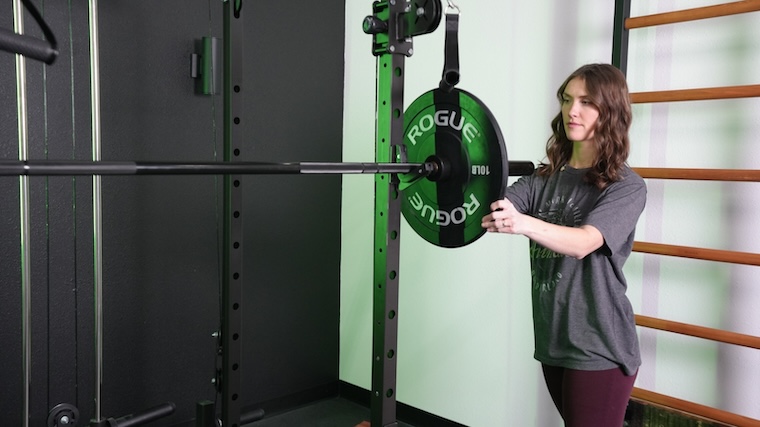
For those wanting to focus on unilateral exercises to even out their frame, dumbbells can provide a more accommodating setup. They’re easier to control with one hand, and can also create a wider range of motion for those needing to support different mobility needs.
In the end, however, the best option for you is the one you feel most comfortable with. Remember, too, that there’s nothing wrong with mixing barbells and dumbbells in your training regimen — why do you think commercial gyms often feature both?
What to Consider Before Buying a Barbell
According to Amanda Capritto, a certified personal trainer, “Barbells are more complex than their appearance may lead you to believe. A well-built barbell with strong, high-quality components makes for a much different (and better) experience than one built with cheaper materials and components.” As such, it’s important to consider the following factors when adding a bar of your own to your cart.
Barbell Type
One of the first questions you need to answer when searching for a high-quality barbell is what sort of lifting you want to perform with the equipment. If you’re looking for a traditional lifting experience, a standard Olympic barbell should be sought out. “Olympic,” in this sense, refers to the bar’s compatibility with Olympic plates that feature a 2-inch opening.
There are sport-specific Olympic weightlifting barbells, though, that feature key components like medium knurling and needle bearings to better accommodate the needs of those strength athletes. Sticking with strength sports, powerlifting enthusiasts should look for a “power” bar designed to make the “big three” lifts of bench press, deadlift, and squat as efficient as possible.
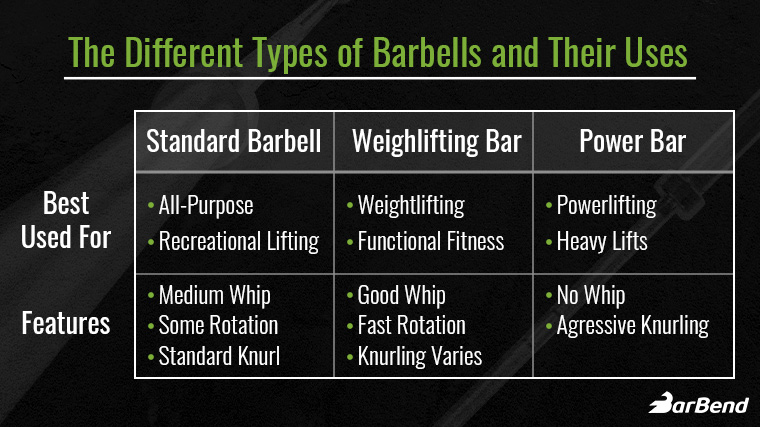
In addition to these three types of bars, you can also come across specialty barbells. These units will feature extra build qualities typically centered around a specific lift. For example, deadlift bars will feature an added sense of whip and aggressive knurling, while squat-specific bars will boast a more rigid construction, since you don’t want the weights jostling and shaking during your squat descent.
Other specialty bars may look nothing like your traditional barbells, but can still be beneficial for adding unique sensations to your training. This is where you’d find such examples as trap bars, safety squat bars, and EZ-curl bars.
Finally, you can also come across bars marketed toward women. In reality, female athletes can use any bar they please in training, but “women’s” barbells typically showcase a thinner bar shaft diameter and lower overall weight — often 15 kilograms — to better accommodate athletes with smaller hands.
Knurling
According to Capritto, knurling is one of the most important components to your barbell, as it’s the main point of contact with you and your equipment. “If it’s too mild, you won’t be able to get a good grip on the bar, even with chalk. Too aggressive, and you’ll feel like you’re pressing your hands into nails,” she adds.
When looking at different knurling patterns, be sure to take your preferences into consideration. Your intended training discipline can also help you decide how aggressive and toothy you want your setup to be. For example, powerlifters tend to favor an aggressive knurling pattern for added control during the bench press, deadlift, and squat, while Olympic lifters and CrossFit athletes generally prefer a more passive setup that won’t rip up their palms and fingers during more dynamic movements.
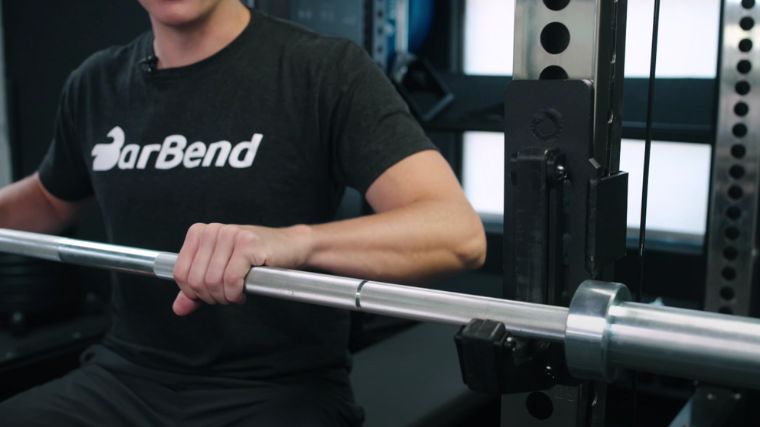
In addition to the knurling pattern, it can also be wise to look at the knurling marks etched into your barbell shaft. These rings are set by either IWF or IPF standards and can serve as a convenient physical cue when getting your hands into position for a lift. Most multi-purpose barbells will carry both IWF and IPF knurling marks, while sport-specific models typically showcase the rings associated with their given discipline.
[Related: Best Barbell Biceps Exercises]
Bar Diameter
A barbell’s grip diameter can be an easily overlooked construction attribute that can be very important. The most common grip diameter for men’s barbells tends to be around 28 or 29 millimeters, while smaller bars — often marketed as “women’s bars” — will feature a smaller thickness of around 25 millimeters.
| Common Barbell Grip Diameters | Useful for Whom/What |
| Men’s 28-29mm (Deadlift Bars Average 27mm) | Recreational lifting, powerlifting, weightlifting, CrossFit |
| Women’s 25mm | Recreational lifting, weightlifting, CrossFit |
If you are a casual lifter, you’ll want to choose the most common diameter and discover your preferences. However, if you plan on competing in a strength sport, you should investigate the diameters mandated by your sport’s governing body and only purchase bars that match that. The barbell you use in training shouldn’t differ much from those you’ll use in competitive settings.
Tensile Strength
Tensile strength measurements can give you a great indication of your barbell’s durability and load capacity. This metric refers to how much your barbell can be weighed down before breaks or structural compromises begin to take hold. Higher tensile strength indicates a more resilient bar, while lower numbers refer to a less capable unit. Below are some guidelines for which tensile strength ranges you should look for, and how barbells at these measurements can be best utilized in a workout routine.
Whip
Your barbell’s whip relates to how much it flexes when loaded down with heavy weights. While beginner or recreational athletes may never stress their bar to the point that this metric shows up, whip can be especially important for stronger strength athletes looking to use their equipment as efficiently as possible in a given lift.
A bar with more whip can be useful for Olympic weightlifters or athletes specializing in the deadlift. For Olympic lifts, more whip can help with inertia during dynamic movements like the snatch or clean and jerk. In the deadlift, the whip allows for less room between the plates and the platform, meaning you don’t need to lift the total load as high to achieve a completed rep.
More rigid barbells can also be desirable, especially for powerlifters. Less whippy barbells can be great for squatting, as the bars won’t bounce and jostle as you descend into the hole and push upward for a completed rep. The weights stay controlled across your back instead of flinging you every which way during your movement.
Whip may not be a huge factor for those not ready to lift hundreds of pounds, but it’s still worth thinking through when deciding on a barbell. Who knows, those half-ton totals could be right around the corner.
Bushings vs. Bearings
Your barbell will also feature either bushings or bearings within the sleeves, which help the weights rotate during movement for more efficient energy transfer and control. Standard barbells or power bars often use bushing systems, as they can be more efficient for slower lifts that don’t put a ton of torque on your wrists and setup. Capritto adds that bushings can also be more resilient and can provide a longer lifespan for your bar.
Bearings are a more premium option and best suited for dynamic lifts like you’d see in CrossFit, Olympic lifting, and HIIT workouts. “Bearings spin more smoothly and quickly, but are more expensive and tend to break down faster than bushings,” adds Capritto.
There is no right or wrong answer, though — you can still perform many of the best barbell exercises with a bushing-based barbell — but understanding the internal makeup of your bar can help you make the most of each training session.
Price and Warranty
High-quality barbells can range in price, with many coming in between $300 and $400. You can save a little money by opting for a cheaper barbell finish like zinc or basic chrome, but be mindful that these coatings will begin to fade more easily than premium options like Cerakote. Additionally, these less-expensive finishes have been shown to be less resilient toward rust and corrosion build-up over time. In the end, however, the best barbell is the one that fits your budget best.
You should also consider your barbell’s warranty package. Many brands offer a multi-year or lifetime coverage against manufacturer’s defects and design flaws, but certain stipulations can exist in your specific plan. Be sure that your intended training method won’t void any coverage. For example, if your warranty doesn’t cover damage brought on by drops, it may not be a great support system for your Olympic weightlifting habits.
Barbell FAQs
How much do barbells cost?
Barbells have a few different price ranges, with entry-level and multipurpose bars generally coming in between $300 and $400. High-end and specialty bars can cost anywhere from $500 to over $1,000. Unless you’re specifically training for one strength sport, such as powerlifting or weightlifting, then you can usually use a solid multi-purpose bar to meet all your needs.
What is the best barbell?
Similar to any other piece of lifting equipment, that depends on your goals and budget, but the barbell we like the most right now is the REP Fitness Colorado Bar. It’s extremely durable, well-priced, and performs admirably in every discipline of lifting.
What makes a great barbell?
A quality barbell will come with some form of warranty and a full rundown of performance specs. Some companies leave out key details that provide insight into how long their bar will likely last, so always be mindful of features like tensile strength, whip, shaft material, and so forth.
What does a barbell’s tensile strength mean?
Tensile strength for a barbell entails how much your barbell can be loaded with before it breaks or fractures. Basically, a high tensile strength equals a better barbell.
Does whip matter in a barbell?
Yes. Whip is an important component to consider for athletes and lifters that are training heavy and have specific strength sport focuses.
References
- Barut, C., Dogan, A., & Buyukuysal, M. C. (2014). Anthropometric aspects of hand morphology in relation to sex and to body mass in a Turkish population sample. HOMO, 65(4), 338–348. https://pubmed.ncbi.nlm.nih.gov/24951406/
- Heckel, A. (2022, September 12). 13 benefits of an open trap bar. REP Fitness. https://repfitness.com/blogs/training/13-benefits-of-an-open-trap-bar
